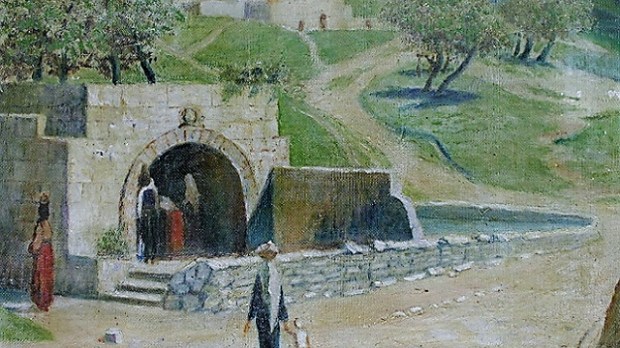When Jesus is quoted in Mark’s Gospel (chapter 7) that “there is nothing outside a person that by going in can defile, but the things that come out are what defile,” he seems to be expressing a lenient view of ritual purity. And that would seem to contrast with new archaeological findings at Nazareth, which suggest that people there practiced a strict interpretation of purity.
First-century Nazareth, in fact, stood out for its strong rejection of Roman culture — so much so that the town revolted against the Empire several decades after the Resurrection.
Ken Dark, director of the Nazareth Archaeological Project, has found a strong contrast to neighboring city Sepphoris, which embraced Roman culture.
“Cultural separation may have created what was, in effect, an invisible barrier between Nazareth and Sepphoris,” Dark writes in his recently published book Roman-Period and Byzantine Nazareth and Its Hinterland.
People in Nazareth may have resisted the Romans during a revolt around A.D. 70, digging refuge caves to protect themselves from Roman soldiers, Dark writes. Sepphoris, on the other had coins minted at the time of the revolt saying it was a “city of peace” where inhabitants did not revolt. And, says an article at Live Science, people within or near Sepphoris “were willing to use imported Roman pottery styles while people within or near Nazareth stuck to local styles and were particularly fond of vessels made of limestone, a material considered pure under Jewish religious laws of the time.”
The article continued:
Another contrast, Dark noted, is that farmers near Sepphoris used human waste as manure despite this practice being forbidden under some interpretations of ancient Jewish religious law; meanwhile, farmers near Nazareth avoided this practice. People buried in Nazareth also seem to have preferred what archaeologists call “kokhim” tombs, which are cut into rock and have an entrance closed off with a rolling stone — a type of tomb that is similar to the one where Jesus was buried in the New Testament. This tomb design is seen in other parts of Israel and those buried in the tombs may “have wanted to express a strongly Jewish identity,” Dark wrote in his book.
Dark points to the fact that Jesus’ message was “all-encompassing,” and salvation would have been for Romans as well as Jews. That would have been controversial to Nazarenes, “who may have sought to create a cultural barrier between themselves and the Romans,” Dark told Live Science.
Also “comparing the teachings of Jesus about religious purity with what seems from archaeological evidence to have been the local cultural attitudes of people in Nazareth, suggests that local people in Nazareth would also have found those teachings in contrast with their own perceptions of what was pure and impure,” Dark said.
Promotional material for the book says it presents a “new social and economic interpretation of Roman-period and Byzantine Nazareth and its hinterland as a whole, showing the transformation of a Roman-period Jewish village into a major Byzantine Christian pilgrimage center.”

